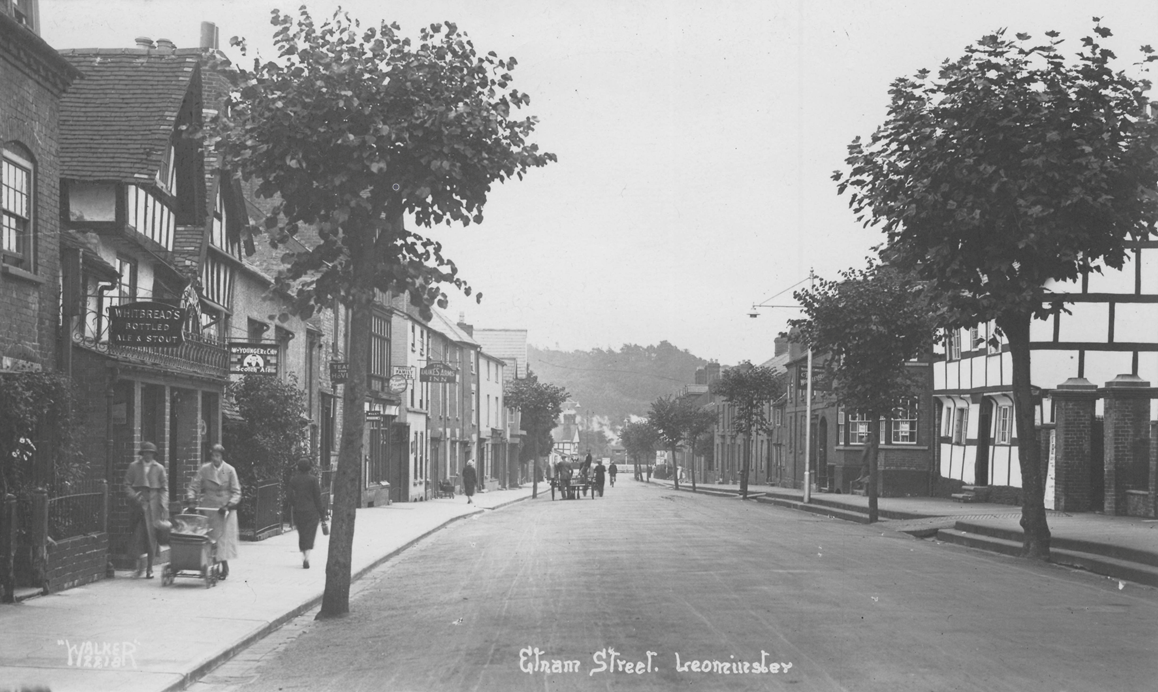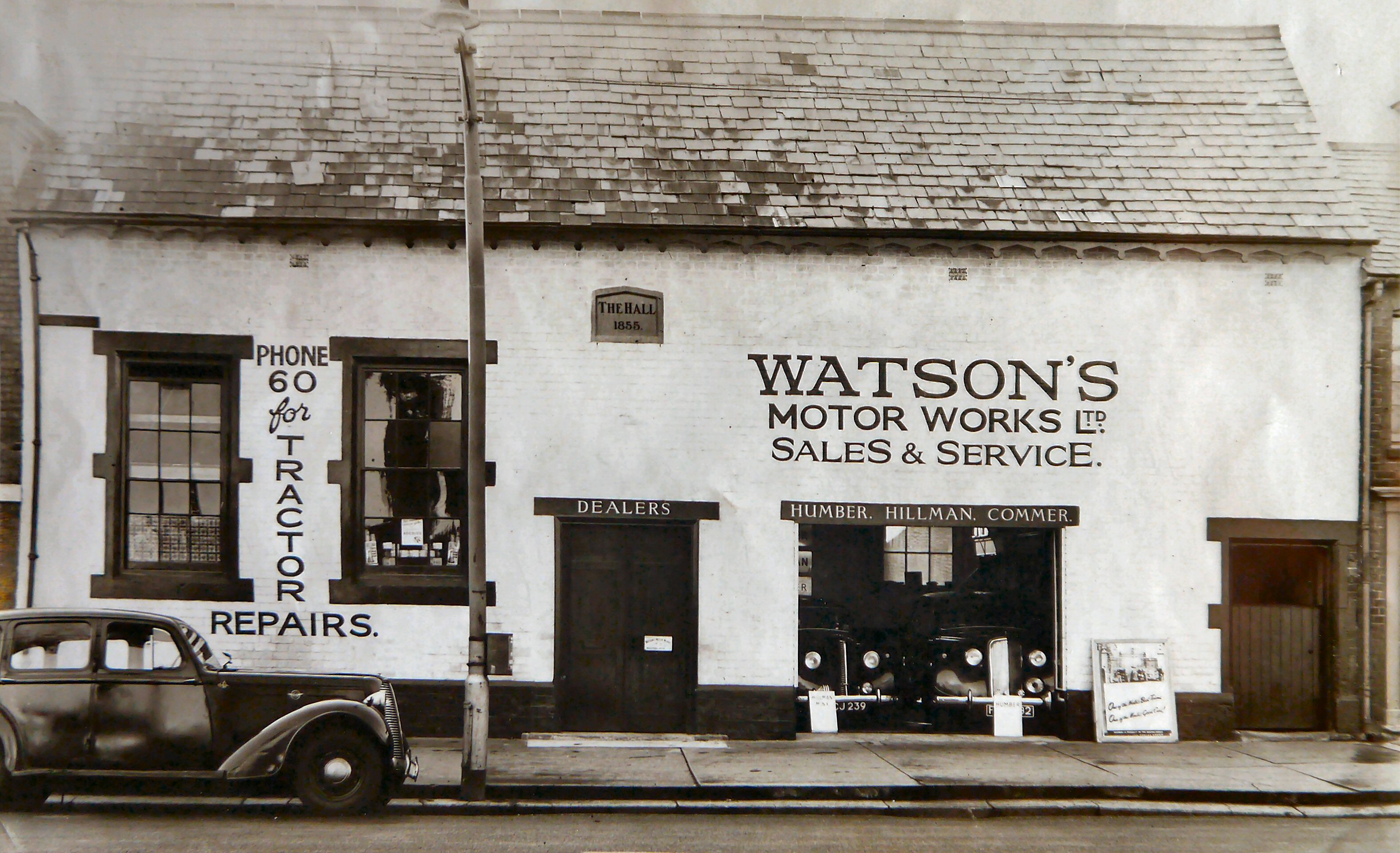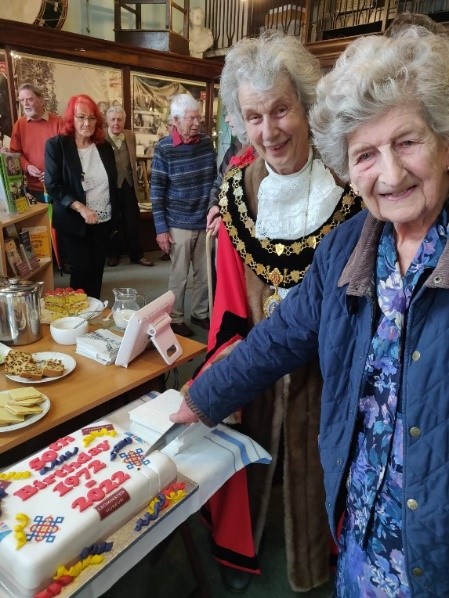Etnam Street
Etnam Street (once known as East Street) began as a piece of 13th century speculative property development by the monks at Leominster Priory. The old Worcester road (of which Grange Walk is the last remnant) was moved about 30 metres to the south. The layout of the new street was carefully planned, and long narrow burgage plots were laid out on both sides of the main road into town from the east. These plots were measured spaces for tradesmen to build their houses and workshops, and then pay annual rent to the monastery. They were narrow to allow the maximum number of buildings to have frontages on the Street. Because of the amount of traffic passing up and down, entering and leaving Leominster, it was a lucrative place to trade. Over the years, the buildings have changed and some of the plots have been split up and sold off, but 19th century maps of the town clearly show the long thin shape of the plots of land behind the street fronts, 700 years after they were laid out.
Before the arrival of the railway in the 1850s, the eastern end of Etnam Street was a very desirable place to live, because of the closeness of Caswell Fields to the south. The Fields were open and considered a lovely place to stroll and take the air, and there were some high-status houses there. After the railway arrived, this changed. Businesses which used the trains to transport heavy goods such as timber, coal, and agricultural produce began to assemble round the station. Cattle were driven down Etnam Street from the market to the station or the nearby slaughterhouse. Caswell Fields were built over in the early 20th century and the whole nature of the area changed.

16 Etnam St
Now Leominster Museum
 |
| In the mid-20th century, this building was taken over by Watson’s Motors and converted into a garage. |
The building that now houses the Museum is over 170 years old, having been built in the 1850s. It almost certainly replaced a timber framed house or shop that was on the same site. It was built as a Mission Hall by the Quaker community in the town. The railway came to Leominster in 1853. Some residents were concerned that the arrival of outside influences would threaten the morals of the town. The Mission Hall was opened in 1855 and provided adult education, Bible study and a meeting place for the town until the early 20th century.
In the mid-20th century, the building was taken over by Watson’s Motors, and converted into a garage, which remained for about thirty years.
In the early 1970s, a number of people in the town formed a group and decided to start a Museum. The Museum Trust was established in 1970, with an appeal to local people for funds to help buy the building. The building was extended in 1977. The Stable was acquired in 1982 and the Cider House was built in 1988. As well as the permanent collection, regular temporary exhibitions are staged every year.
In 2022, the Museum celebrated its 50th birthday with a party. You can learn more about the Museum by visiting its website.
Image Acknowledgements
Images of advertising sourced from British Newspaper Archive (www.britishnewspaperarchive.co.uk) and The British Library Board.
© 2022 Findmypast Newspaper Archive Limited.
Images of Leominster shopfronts with kind permission from Herefordshire Museum Service.

